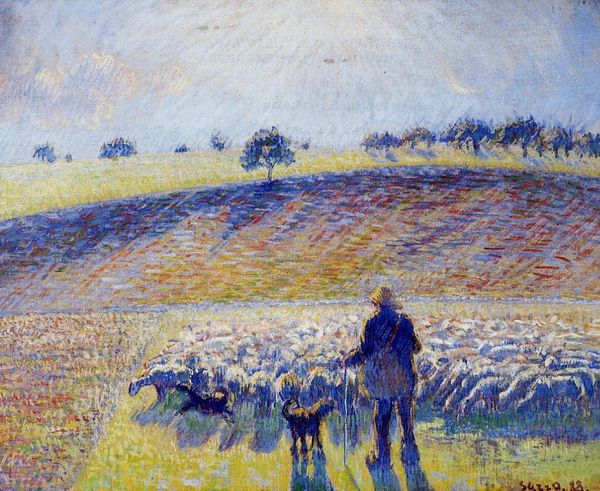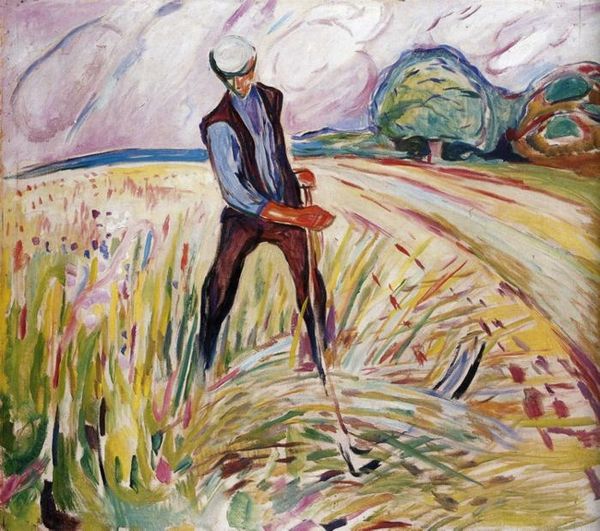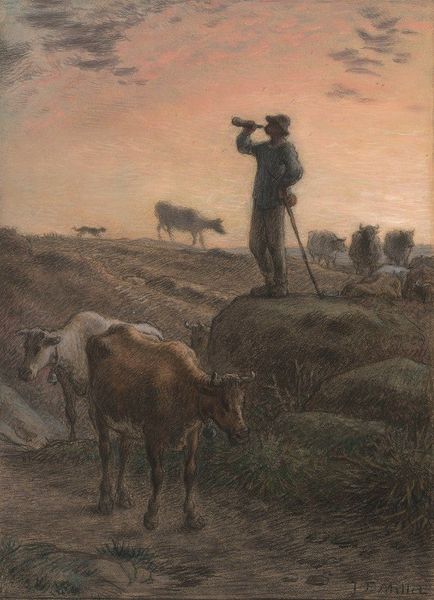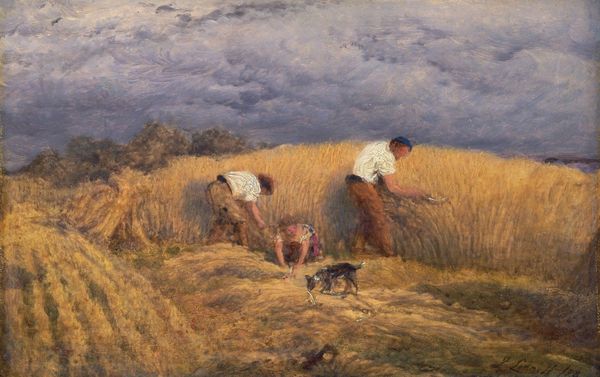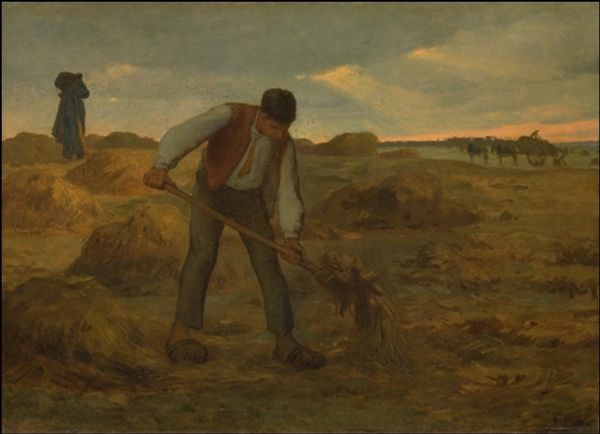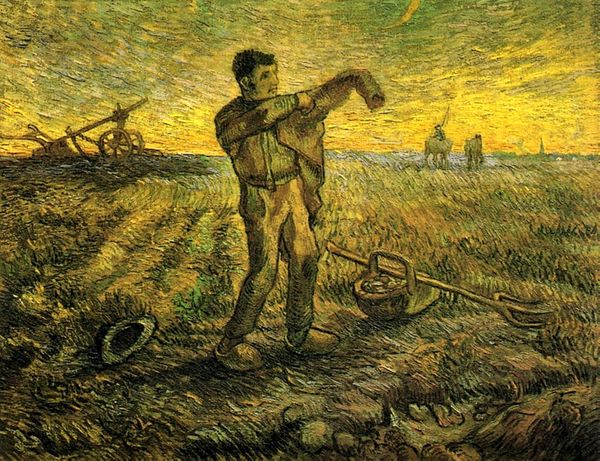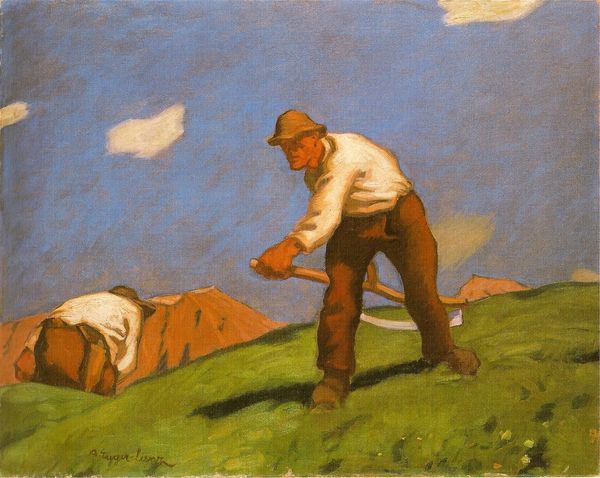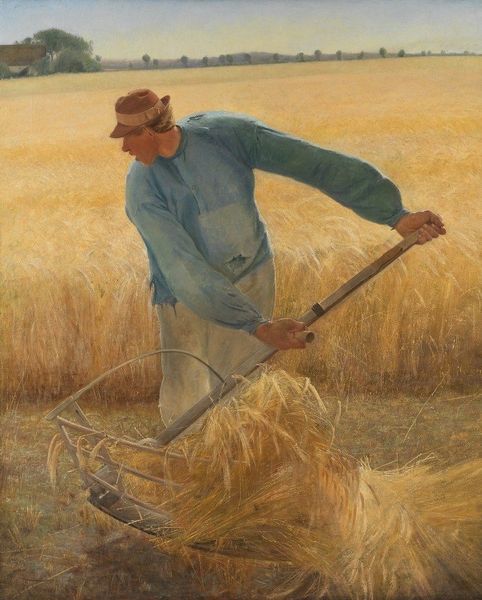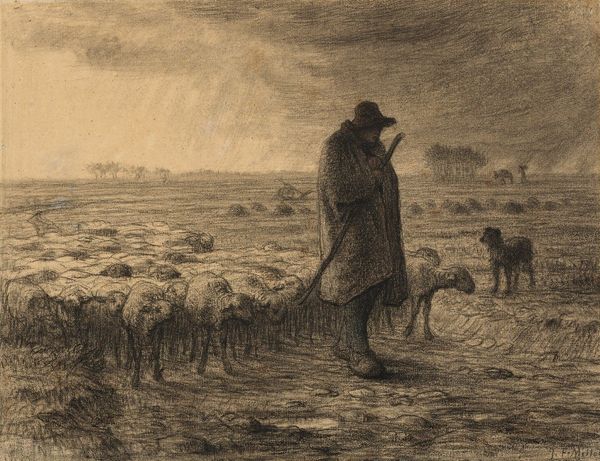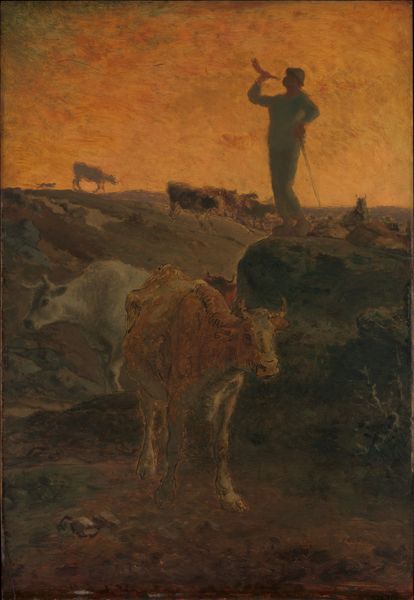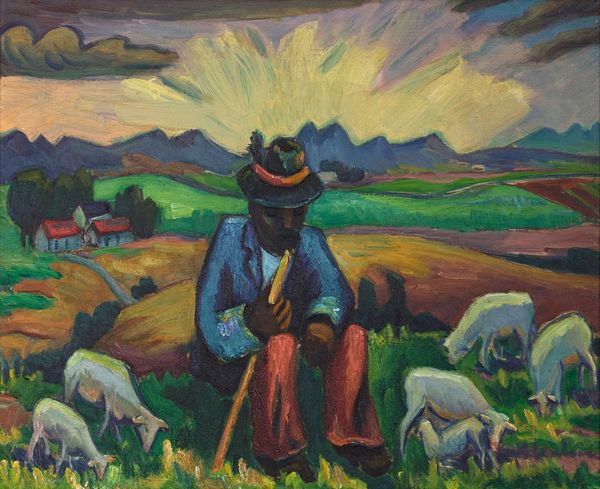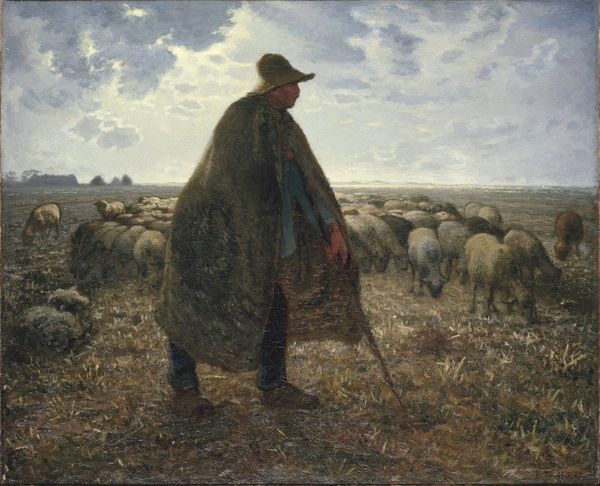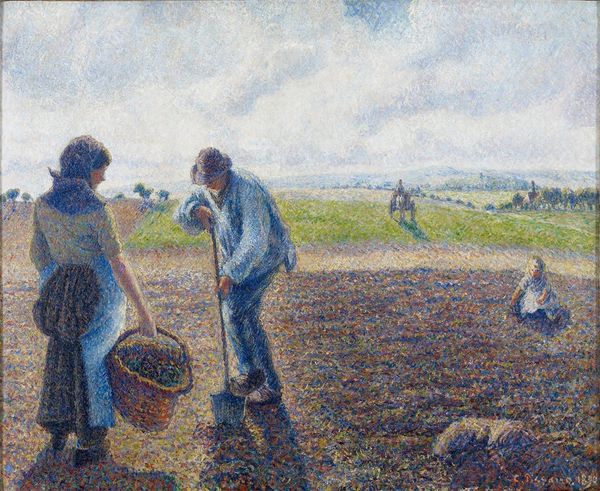
Dimensions: height 56.7 cm, width 79.2 cm, thickness 2.9 cm, depth 6.5 cm
Copyright: Rijks Museum: Open Domain
Curator: The mood here is heavy, almost mournful, wouldn’t you say? The golden light feels more like the setting of a day than the rising of one. Editor: We’re looking at “Shepherd with Sheep,” an oil painting likely created between 1900 and 1945 by Cornelis Albert van Assendelft. It is a compelling example of realist and impressionist landscape painting. Curator: The weight of the shepherd's labour is palpable. He carries his staff, almost slumped, a posture imbued with the toil of rural life. I am drawn to the symbolic heft carried in these pastoral images, especially during times of rapid urbanization. This image speaks of a simpler, perhaps idealized, past. Editor: Interesting that you pinpoint the ‘weight’ of labour; it makes me consider this image through the lens of social history, particularly the politics surrounding depictions of rural life in early 20th-century art. Consider the rise of industry and anxieties about the loss of traditional ways. Paintings such as this often served as both nostalgic reflections and subtle critiques of modernity. Curator: And that setting sun... is it setting, or is it some kind of spiritual light? The shepherd leading his flock—an archetypal symbol. Is van Assendelft using this genre-painting to tell a tale beyond the agrarian? The symbol of the shepherd carries so much weight. Editor: True. And we also have to think about the art market itself. The early 20th century saw a surge in popularity of landscape paintings. Picturesque scenes offered solace to urban dwellers. Genre paintings romanticizing rural existence appealed to a middle class, rapidly emerging as cultural consumers. It is important to remember the role of galleries and exhibitions. The symbolism becomes packaged and sold. Curator: A shepherd sold to the masses. That's a provocative consideration, yes, how this symbol enters public life in the modern world through paintings such as this. Despite my more romantic interpretation, the commercial element undeniably impacts our contemporary view of this cultural memory. Editor: Absolutely. By exploring it this way, we remind ourselves that art isn’t made in a vacuum—and neither is our viewing of it. Curator: And those archetypes? Well, they live on in surprising places. Thanks for the lively perspective, it has made me reconsider this beautiful scene.
Comments
No comments
Be the first to comment and join the conversation on the ultimate creative platform.
